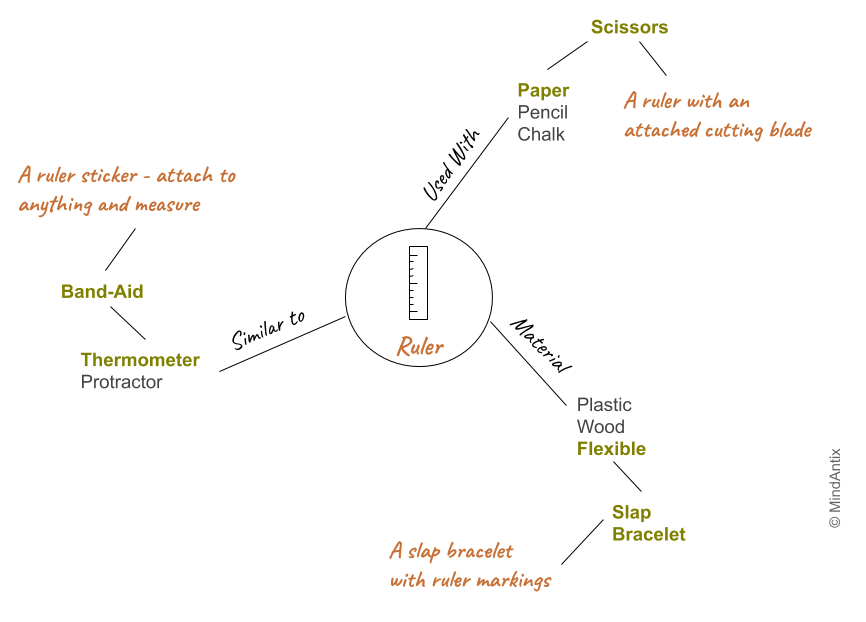Daniel Kahneman, in his groundbreaking book based on decades of his research, used the associative nature of the human brain to explain different cognitive biases that we inadvertently succumb to. The same associative aspect can also be used in understanding how our brains think creatively and how sometimes we fall into an “associative rut”, where we keep going in circles with the same few ideas.
One way to overcome the associative rut is to find a connection between completely unrelated concepts, an approach that sometimes lead to very original ideas. Another simple, yet surprisingly effective, technique to generate amusing and novel product ideas involves making an association map.
In this approach, the idea is to connect concepts that are related but not directly. In the examples used in the study, the researchers focused mainly on sensory attributes like sight and touch, which lead to more observable incongruities. However, we found that this approach works just as well with other attributes as well.
In this approach, you start with an initial product – the subject of your innovation – which goes in the center of the association map. From there, you branch out with a few different attributes like “used with”, “material” or “similar to” to come up with the first order of associations. Since these associations are directly related to the object, they don’t really provide a chance for incongruence or novelty. However, once you start branching out more to the second order of associations, then things get more interesting. That’s where, when you make a connection back to the subject, it’s not very obvious but at the same time not too hard for people to find the connection reasonable. It’s the perfect Goldilocks association!
Here’s an example, using a simple classroom supply. Suppose you want to make a more interesting ruler. So you start with the ruler in the center and choose some attributes like “used with”, “material” and “similar to”. Then, you list different values for each of those attributes like the material could be plastic or wood. This gives the first order of concepts that are directly associated with the ruler. The next step is to find another set of concepts, the second order concepts, that are associated with the first order ones. Finally, you try to connect back the second order concepts with the original object and see if that helps uncover an interesting idea.
For example, a ruler could be made of a flexible polymer and another use case of a flexible material is a slap bracelet. By connecting the concept of a slap bracelet with a ruler, one can imagine making a slap bracelet with ruler markings which a student can wear and use as a ruler anytime they needed one. With this invention, you always have a ruler handy (pun intended) whenever you need it!
The reason that the association map works well is due to the incongruity theory. When people notice an incongruity, they can either find it amusing or be disappointed. When people can tie the incongruity back to the product then it results in an appropriate congruity and the product feels more fun, interesting or amusing, but when people can’t find an underlying connection, the product appears confusing.
In this example, a flexible strip of plastic material connects the concepts of both the slap bracelet and the ruler. So the incongruity between a slap bracelet and a ruler just seems appropriate and fun when connected together.
So, the next time you are trying to come up with a new product idea, instead of using the typical mindmap, try making an association map and see if that leads you to some fun, refreshing ideas.

